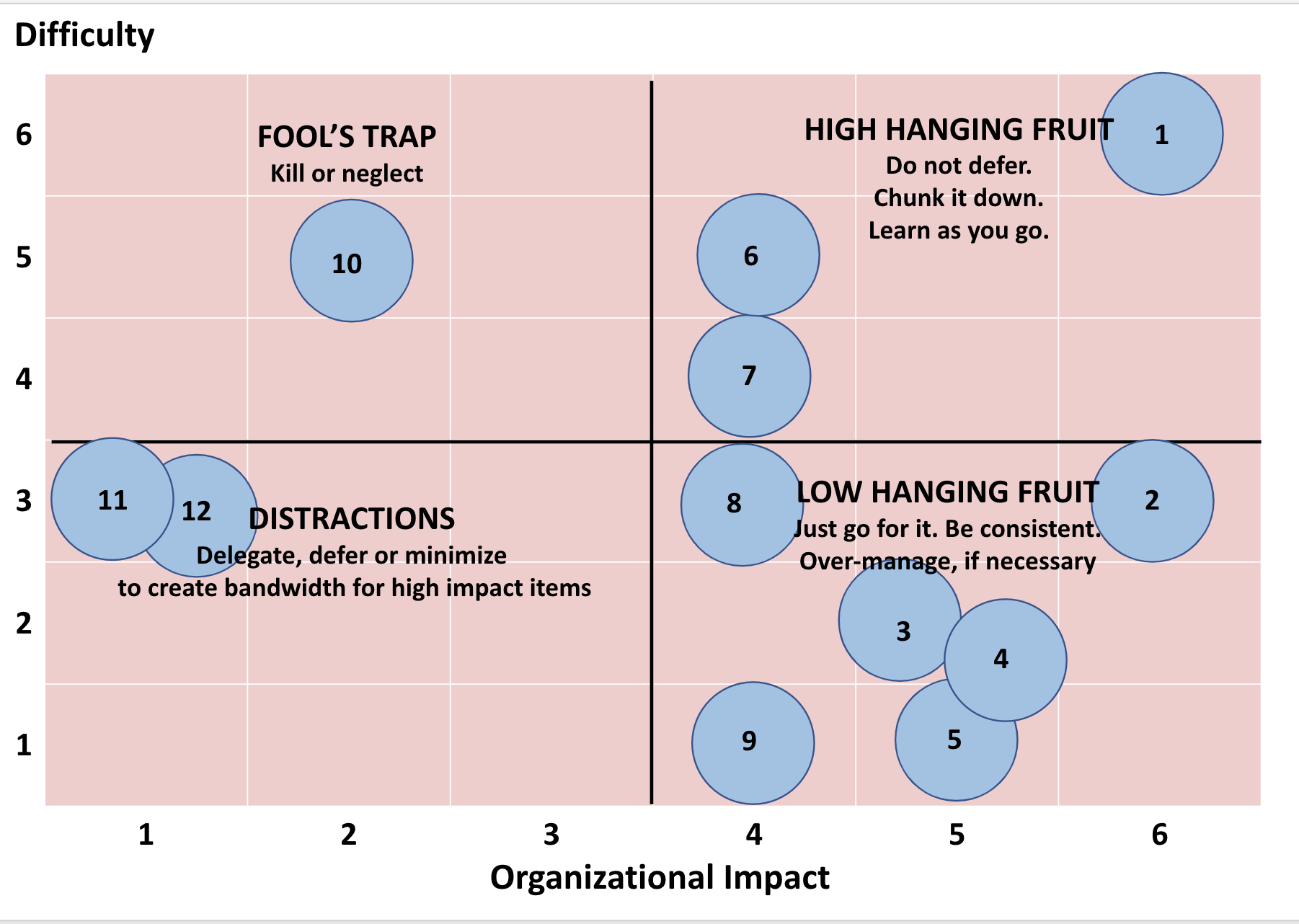Case Example
Shown below is a representative set of problems surfaced during diagnostic interviews, portrayed in a priority grid. (This is a composite example from actual work with clients.)

The table below shows the hypothetical client consensus on the organizational impact of each issue if resolved, and the estimated difficulty in doing so. (Notice that issues requiring higher behavioral change are typically rated as more difficult.)
| Opportunities surfaced in interviews | Resolution | Impact if Resolved (“6” is greatest impact) | Difficulty (“6” is greatest difficulty) |
|
|---|---|---|---|---|
| 1 | Much of the organization is cynical and disengaged. | Link to Content | 6 | 6 |
| 2 | We confuse strategy with tactics. We focus on metrics before we have thought through how we should best approach things. | Link to Content | 6 | 3 |
| 3 | Different parts of the organization act independently. There is little overall cohesion across functions and departments. | Link to Content | 5 | 2 |
| 4 | It is finally time to decide if we should enter Market X. | Link to Content | 5 | 2 |
| 5 | Strategic planning is forced into a short budget-driven cycle. | Link to Content | 5 | 1 |
| 6 | We could use a lot more candor in debating the tough issues. People seem afraid to speak up. There is too much group think. | Link to Content | 4 | 5 |
| 7 | Leadership lacks creativity and rigor in its strategic choices. | Link to Content | 4 | 4 |
| 8 | We have more “strategic priorities” than we can handle. We need to focus on a couple of things and do them really well. | Link to Content | 4 | 3 |
| 9 | We lack a common view of our problems. We seems to be working on different issues. | Link to Content | 4 | 1 |
| 10 | People just need to be more committed. It’s as simple as that! | Symptomatic. Dig for root causes | 2 | 5 |
| 11 | We need to improve communication | Symptomatic. Dig for root causes | 1 | 3 |
| 12 | We spend too much time in meetings | Symptomatic. Dig for root causes | 1 | 3 |